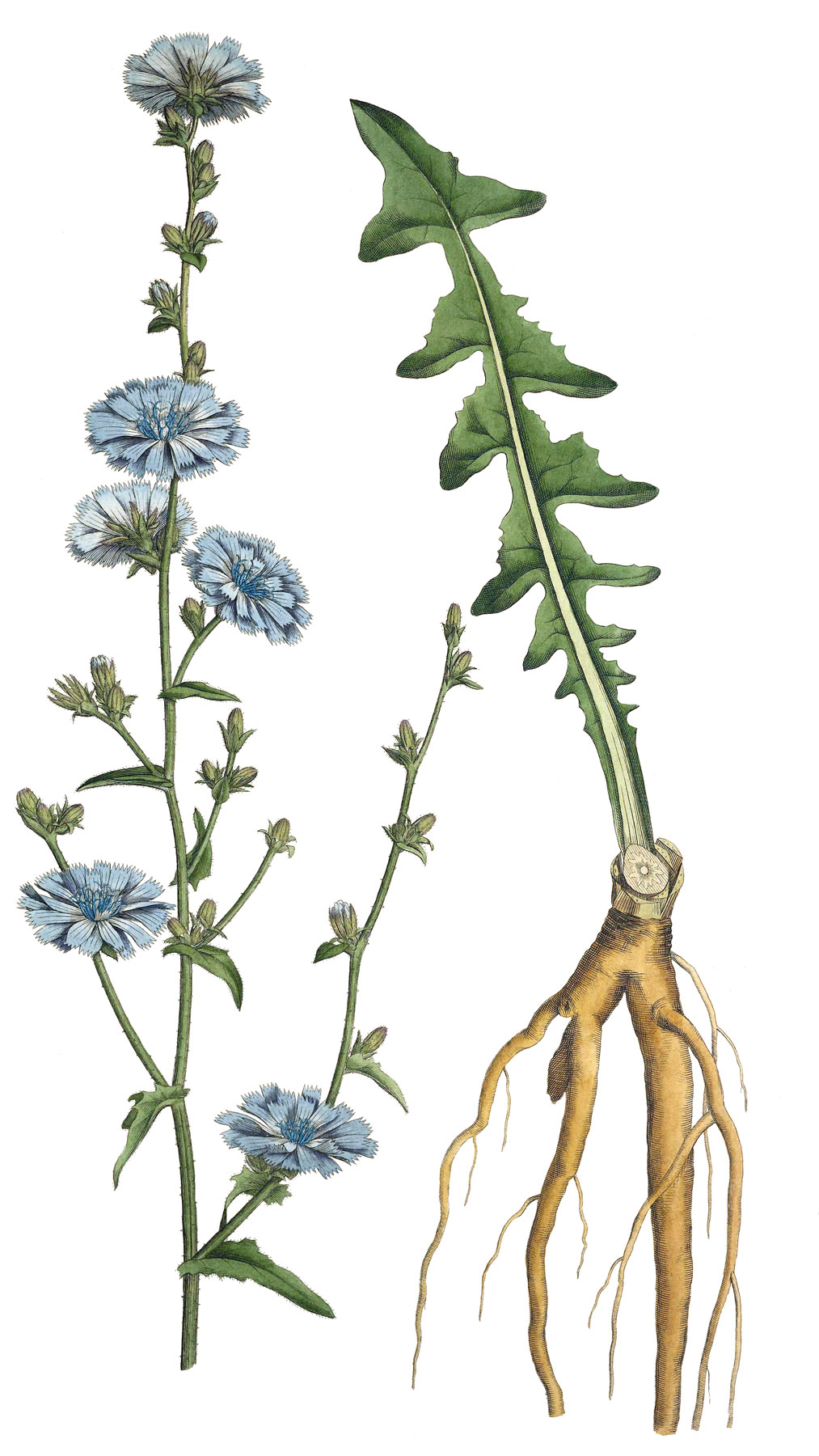Chicory

Origin: Europe, Western Asia, Northern Africa
Family: Asteraceae
Subfamily: Cichorioideae
Tribe: Cichorieae
Subtribe: Cichoriinae
Scientific Name: Cichorium intybus
Folk Names: Blue daisy, blue dandelion, blue sailors, blue weed, bunk, coffeeweed, cornflower, hendibeh, horseweed, ragged sailors, succory, wild bachelor’s buttons, wild endive, wild succory,
Magical
Element: Air
Day: Thursday
Planet: Jupiter
Zodiac: Sagittarius
Associated Celebrations: Midsummer
Parts used: Root
Magical Properties: Consecration, divination, removing obstacles, invisibility
Lore
- Nicholas Culpeper describes it as an herb of Jupiter. Among other uses of chicory, he lists the distilled water of the herb as being good for “swoonings and passions of the heart”.
- European folklore:
- Carrying chicory is supposed to render one invisible.
- It was believed that chicory could be used to open locked doors.
- Folklore states that chicory used for these purposes should be harvested at noon or midnight on St. James’s Day, cut with gold, while being silent, or else carries a risk of death.
Magical Uses
- Carry chicory to remove any obstacles that may arise in your life.
- Anoint yout body with chicory juice in order to attract a favour from someone important.
Practical
Chicory is often grown as a forage crop for livestock.
Culinary
The entire plant is edible.
- Varieties are cultivated for salad leaves.
- Roots are roasted as a coffee substitute.
- An extract made from chicory root, inulin, is used in food manufacturing and a sweetener and source of dietary fibre.
Botanical
There are a number of chicory cultivars created for food purposes, including radicchio, Belgian endive, and Catalogna chicory.
Type: Perennial herb
Plant Height: up to 1.5m
Stem: Tough, grooved, moderately hairy
Leaves: Stalked, lance-like, 7-32cm long & 2-8cm wide
Flowers: 3-5cm across, usually light blue or lavender (rarely white or pink)
